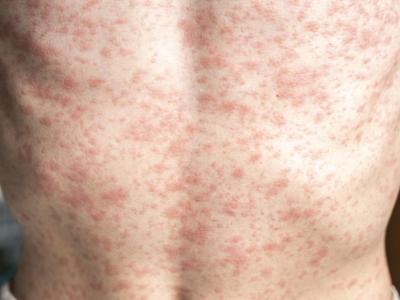Report details H3N2 flu outbreak in highly vaccinated crew
In February a US Navy minesweeper moored in San Diego harbor experienced an influenza-like illness (ILI) outbreak that affected a quarter of the crew—much of it attributed to H3N2 flu—even though almost all of them had received influenza vaccine, according to a report today in Morbidity and Mortality Weekly Report (MMWR).
Scientists from the Navy and the Centers for Disease Control and Prevention reported that, over the course of 3 days in mid-February, 25 of 102 USS Ardent crew members sought medical care because of ILI. Polymerase chain reaction testing of nasal swab specimens showed that 20 were positive for influenza A, of which 18 were subtyped as H3N2. The other 2 could not be subtyped.
Sequence analysis showed the virus infecting the crew to be antigenically similar to the H3N2 component of the vaccine, the researchers reported.
To reduce disease spread and impact, patients with ILI were prescribed oseltamivir (Tamiflu), and other outbreak-reduction steps were taken aboard the ship. The authors note that 99% of the crew had received flu vaccine, including 24 of the 25 with ILI. The ill crew members lost 43 cumulative working days.
Because San Diego County officials had reported H3N2 circulating in the weeks leading up to the shipboard outbreak, the authors said the disease was likely acquired from the local community.
Oct 24 MMWR report
Study: Low rates of H7N9 transmission by three routes in Guangdong
The risk to humans of new infection with H7N9 avian influenza is low in the early stages of circulation of the virus, according to a study today in Virology Journal of people in Guangdong province, one of the epicenters of the 2013-14 H7N9 outbreak in China.
The first human cases of H7N9 were detected in eastern China in March 2013. Officials in Guangdong province, in the south, confirmed cases in poultry in April 2013, found the virus in environmental samples in May 2013, and detected the first human case in a woman in July of that year.
The authors conducted serologic studies of three groups of individuals in Guangdong early in the epidemic using hemagglutinin inhibition (HI) and microneutralization (MN) assays with H7N9 viruses from infected patients, infected poultry, and contaminated environments as antigens.
The three groups sampled were considered to be at risk for H7N9: 125 people exposed to the index patient, 240 people likely exposed to the first infected poultry, and 196 people potentially exposed to environments contaminated with the virus.
Among the 561 total samples screened for antibodies to viruses, 7 from those exposed to contaminated environments were positive on HI and 1 of those was positive on MN using poultry H7N9 as the antigen. One sample was positive on HI against human H7N9, and three were positive on HI against environmental H7N9 in the group exposed to the index patient; none of these were positive on MN. All HI titers in the group with likely poultry exposure were less than 40 using all three viruses as antigens.
The authors say, "The antigenic sites of [hemagglutinin] proteins of the H7N9 strains from different hosts were highly conserved," and they conclude, "The risk of new infection is low in individuals who have contact with infected patients, poultry, or a contaminated environment in the early stages of the circulation of the H7N9 virus."
Oct 23 Virology J abstract










